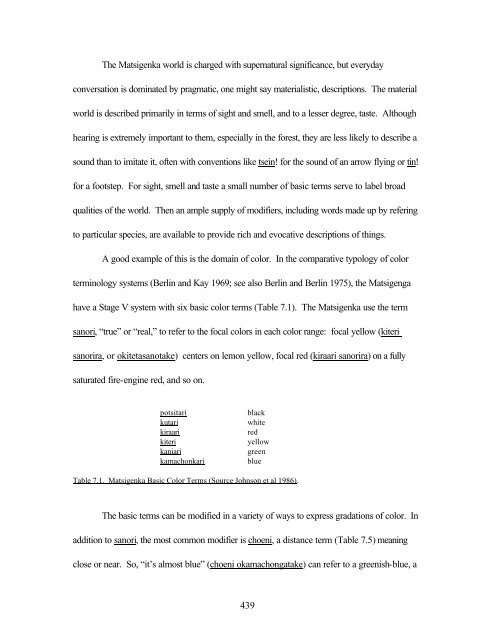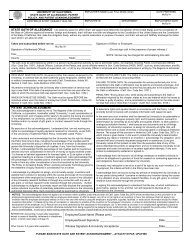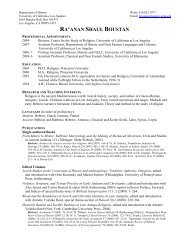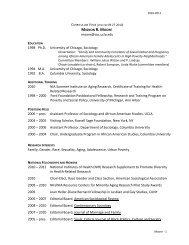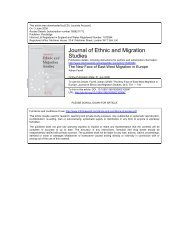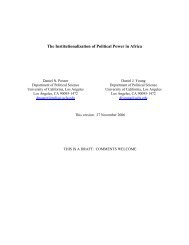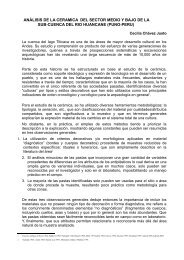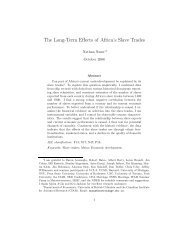433 Chapter Seven Cosmos For the Matsigenka of Shimaa, kameti ...
433 Chapter Seven Cosmos For the Matsigenka of Shimaa, kameti ...
433 Chapter Seven Cosmos For the Matsigenka of Shimaa, kameti ...
You also want an ePaper? Increase the reach of your titles
YUMPU automatically turns print PDFs into web optimized ePapers that Google loves.
The <strong>Matsigenka</strong> world is charged with supernatural significance, but everyday<br />
conversation is dominated by pragmatic, one might say materialistic, descriptions. The material<br />
world is described primarily in terms <strong>of</strong> sight and smell, and to a lesser degree, taste. Although<br />
hearing is extremely important to <strong>the</strong>m, especially in <strong>the</strong> forest, <strong>the</strong>y are less likely to describe a<br />
sound than to imitate it, <strong>of</strong>ten with conventions like tsein! for <strong>the</strong> sound <strong>of</strong> an arrow flying or tin!<br />
for a footstep. <strong>For</strong> sight, smell and taste a small number <strong>of</strong> basic terms serve to label broad<br />
qualities <strong>of</strong> <strong>the</strong> world. Then an ample supply <strong>of</strong> modifiers, including words made up by refering<br />
to particular species, are available to provide rich and evocative descriptions <strong>of</strong> things.<br />
A good example <strong>of</strong> this is <strong>the</strong> domain <strong>of</strong> color. In <strong>the</strong> comparative typology <strong>of</strong> color<br />
terminology systems (Berlin and Kay 1969; see also Berlin and Berlin 1975), <strong>the</strong> Matsigenga<br />
have a Stage V system with six basic color terms (Table 7.1). The <strong>Matsigenka</strong> use <strong>the</strong> term<br />
sanori, “true” or “real,” to refer to <strong>the</strong> focal colors in each color range: focal yellow (kiteri<br />
sanorira, or okitetasanotake) centers on lemon yellow, focal red (kiraari sanorira) on a fully<br />
saturated fire-engine red, and so on.<br />
potsitari<br />
kutari<br />
kiraari<br />
kiteri<br />
kaniari<br />
kamachonkari<br />
black<br />
white<br />
red<br />
yellow<br />
green<br />
blue<br />
Table 7.1. <strong>Matsigenka</strong> Basic Color Terms (Source Johnson et al 1986).<br />
The basic terms can be modified in a variety <strong>of</strong> ways to express gradations <strong>of</strong> color. In<br />
addition to sanori, <strong>the</strong> most common modifier is choeni, a distance term (Table 7.5) meaning<br />
close or near. So, “it’s almost blue” (choeni okamachongatake) can refer to a greenish-blue, a<br />
439


